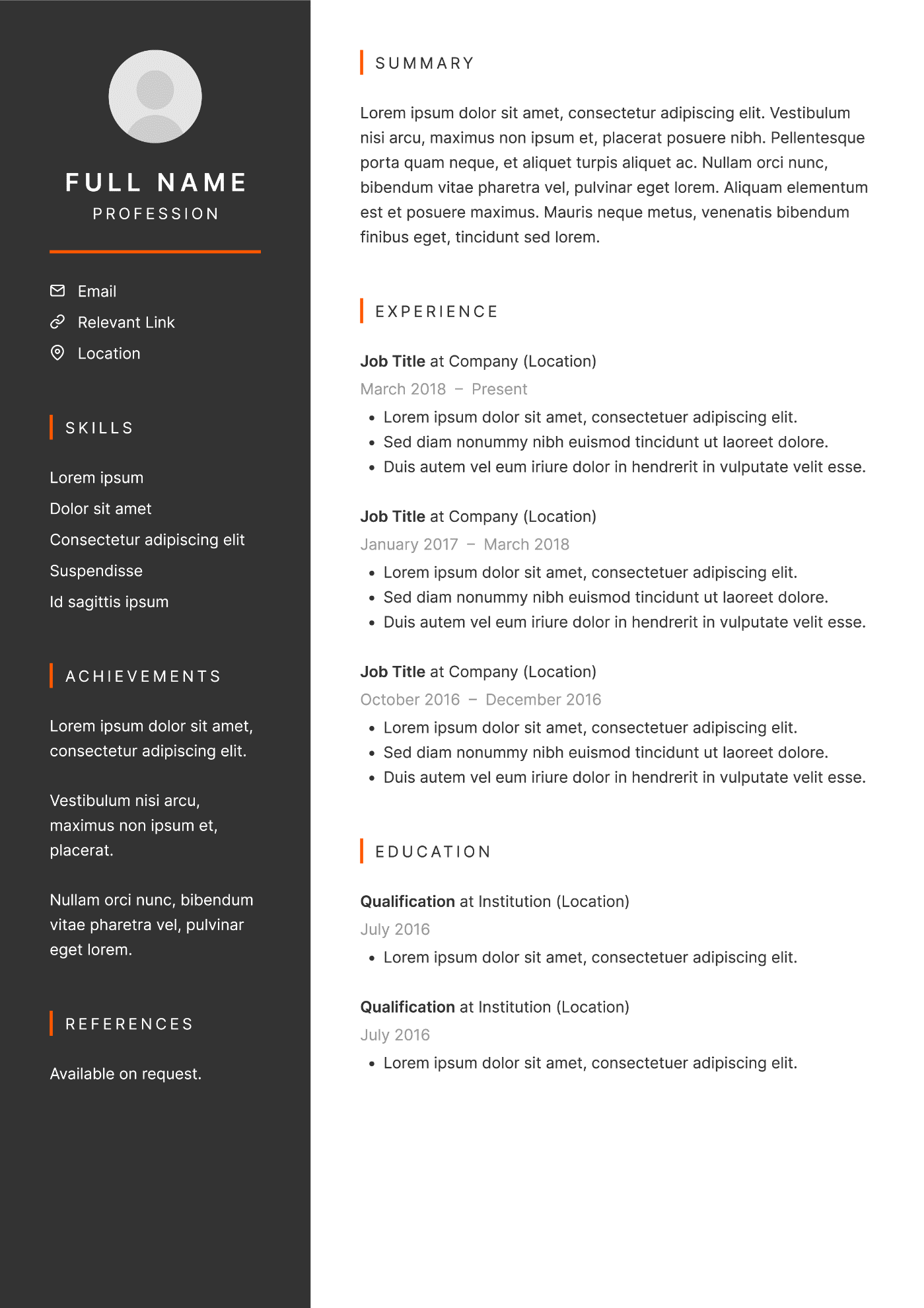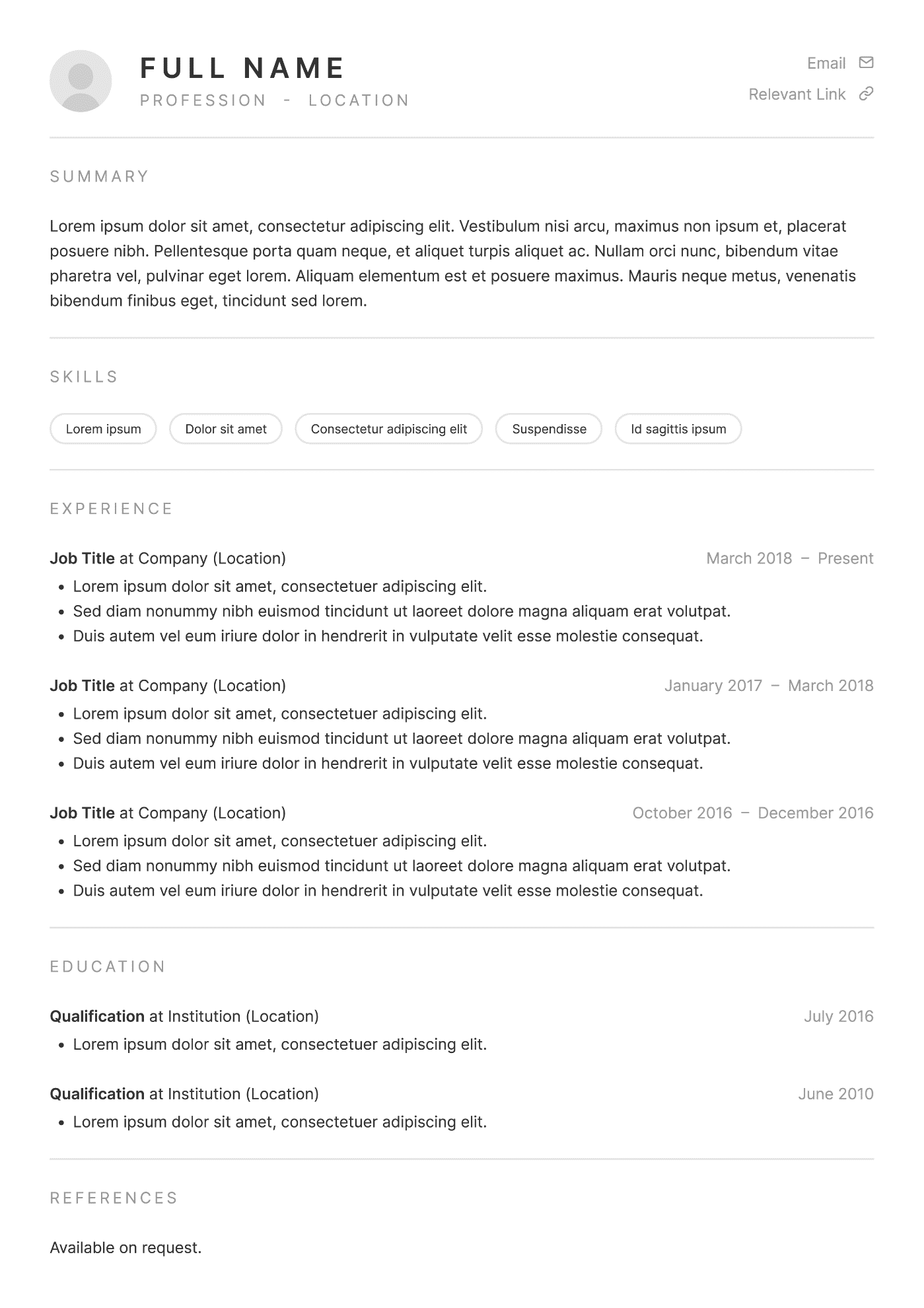Create The Ultimate Gaming & Esports Resume
Esports resumes and gaming resumes are not that different from traditional ones. Even in this age of digital communication, resumes and cover letters are still an essential part of the hiring process. They are the first step employers take when searching for and weeding out potential candidates. If you want to get to an interview, you must first impress with your resume and cover letter, making you stand out from the crowd of applicants competing with you. With this in mind, let’s start with some fundamental concepts.
Fundamentals
Before we get into the look and “feel” of your resume, we need to set some ground rules:
Professional email. If your email address is something silly like playah69@hotmail.com, change it to something like firstname.lastname@host.com, or create a new professional e-mail.
Lying in your resume is pointless. Even if the lie helps you get the job, as soon as you get it, people will quickly discover you cannot do what you said you could. Developing a reputation for dishonesty is a good way to torpedo your promising career.
Proofread, over and over. There is no excuse for sloppiness. Sloppiness in your resume or cover letter translates to sloppiness with work.
Who you are. Your resume and cover letter should display your personality, whether through the font you use, colors in your resume, or the prose in your cover letter, recruiters should get some sense of who you are.
Keep it brief. No one wants to — or has the time to — read long winded letters and resumes. A cover letter should be one page and resumes one or two pages. Recruiters and hiring managers are very busy people and are not likely to read lengthy resumes or letters.
Save as a PDF. Unless you are sending your resume to an online recruiter a website, save it as a pdf, unless the job application requests otherwise. PDFs looks more professional and much neater, and anyone can open them with a variety of apps.
File name is important. Do not save your resume as resume.pdf. Save it as yourname_resume.pdf. You want your file to contain your own name, so that the hiring managers have your name in their minds every time they the file.
Update and tailor. Every time you apply for a job, update your resume. Always tailor your resume to fit the job description in question.
Contacting You. Your e-mail address, any listed social media profiles, personal websites, etc. should be hyperlink. This makes it easy to find your work.
These nine are the golden rules of resume writing and form the basis for all good resumes. Now let’s look at layout and content.
Examples
Here are two images of two different examples of a gaming and esports resume:
The first is called a two-column layout. The left column contains personal information, whereas the right column contains professional information.

The second example shows a single-column layout. There is no right or wrong layout, and different people have their own preferences. Use whichever you prefer and whichever helps you to best organize and structure your resume.

Content
While the layout is not terribly important, the content is. Let’s talk about what your resume should contain.
Headshot
Not everyone includes a headshot, and some people recommend you should not. We say you should, and this is why.
Hiring someone is a personal process. A person or group of people are looking for someone to join their team. This means working together. Getting to know applicants personally is a major part of the hiring process. At the same time, as an applicant, you want to stick out from all the other applications and resumes. Providing a headshot helps achieve both goals. Furthermore, some jobs are very public-oriented, such as marketing or sales. Not providing a headshot for such jobs is a huge mistake.
Name
Your name should be at the top, in bold, possibly in caps, certainly in a larger font size. Your name must stick out at the top of the page. You do not want potential employers forgetting your name or having to hunt around your resume to remember who you are.
Profession
This is where you describe yourself professionally. What experience do you have? What have you accomplished? If you are just starting out and have not had a profession, you can call this section “Specialty”. The point here is to describe your professional skills and experience as briefly as possible, tailored to the job in question.
Summary
In this section, you want to stress all the points that make you the best candidate for the job. Keep it brief and to the point, hitting on the key factors in your resume. Remember to:
-
-
- Start strong. Display a bit of your personality, professional approach and work philosophy, your love for the industry and the job.
- Follow up. Follow that by pointing out your skills. You can do the job and can do it well.
- Finish with purpose. Explain why you are looking for a new job and what you can offer to a new company.
-
Keep the summary to about 100 words. Use “I”, not the third person, to reference yourself. This is you selling yourself, making a case for why they should hire you.
Contact
If they cannot contact you, your candidacy will go nowhere. Provide plenty of contact information here; your phone number, e-mail address, home address, discord, Facebook, LinkedIn, etc. Make sure these are hyperlinks whenever appropriate!
Skills
This section should include your professional skills, and your expertise. Make a list of four to six skills, placing the most relevant to the job on top. If you have skills not relevant to the job at all, leave them out. These skills should be profession-oriented, not “soft skills” (such as hard working, enthusiastic, etc.). Use the job description as a guide when selecting and ordering your skills.
Achievements
If you are creating a one-page resume, then leave this out. In a two-page resume, this section is where you show off a bit, highlighting your professional achievement and even some personal achievements. You are trying to sell yourself as a person, not merely a professional, and in this section, you can mention a few achievements in your life, some of which might lie outside of the job.
Include no more than six items here, preferably as few as three, and expand on them a little bit instead of merely presenting bullet points.
Expertise
Another section for a two-page resume includes some specific skills or expertise. You can talk here about any specialty software or tools you can use, or interpersonal skills such as negotiating or selling. In other parts of your resume, you display some of your personality, but here you focus on skills. When we say skills, we do not mean something like Microsoft Office since most people feel that they can use that just fine. No, here you will include knowledge of specialty-type software, such as video editing software. Try to focus on skills that are relevant to the job for which you are applying, limiting your list to a maximum of six items.
Interests
This section is a bit controversial. The interests section is not about the job at all, and some argue it is irrelevant. Others argue that it can be relevant because hiring managers are looking for more than just a set of skills. They are hiring a person, and your interests say something about who you are outside of the job.
Consider including interests that you think are interesting and that might even pertain to the job in question. If you love gaming, that is certainly a relevant interest, after all, if you are trying to work in game development. Keep the list to no more than four to six items, just as with everything else.
Experience
This section is about what you have done over the past few years, starting with the most recent work and working backward. Each entry should start with your job title and role, dates in that role, the name of the company you worked for, and note if the work was remote. The company name should be a hyperlink to their website if applicable. Beyond that, what you write in each entry is very important.
What you do not want to do is make a bulleted list of day-to-day responsibilities. Boring the hiring manager with minutiae is not the goal here. We want to impress them with your achievements in that role. Make a list of bullet points showcasing your accomplishments, the things you did that had some impact on the company. Did you increase sales? Did you improve workflow efficiencies? Create new products? Increase follower count? As you list these accomplishments, write them briefly using action words. Something like “Increased sales 20%” is better than a long-winded description of job duties. Hiring managers are busy, they read hundreds of applications. Getting their attention quickly and making a strong impression puts you ahead of the game. The goal is to focus on achievements, not responsibilities. What you were supposed to do in the role is much less important than what you actually did. With this in mind, lead each job entry with the larger and more impactful achievements, the ones that give you the most pride. Stick to three to five of your biggest successes in each job role.
Finally, use the job requirements as a guideline for those lists of accomplishments. If you are applying for a job in marketing, make sure you focus on marketing-relevant achievements as much as possible.
Education
The education section should follow the experience section. As with the experience section, list your most recent education first. If you have more work experience, then make this section short. Your experience and achievements are more important than your education. At a minimum, include your college or graduate training and possibly any advanced studies. If you have very little work experience, spend a little more time on your education, relevant courses, where you studied and the number of years, if you graduated valedictorian, and so on.
Finally, if you have a little space left, you can take the opportunity to include relevant extracurricular activities. This is not required by any means, but it can help reveal a little more about you as a person.
References
A final short section, simply create a “References” heading and write “These are available upon request.” If space permits, add in the names of one or two people who can provide strong references, including their contact information (name, e-mail, job title, and company name).
Conclusion
There is no one right way to do a resume for everyone, but certain key principles are universal. Your resume should provide all the information a hiring manager expects to see based on the job for which you are applying. It should give them a clear picture of who you are, your achievements, your work history, and your education. Hiring managers are looking for someone to fill a needed role, and the resume is your way of showing them you are the person they seek.
The only other thing to keep in mind is your cover letter, and we have a guide for that here: our full cover letter guide.

Get Social